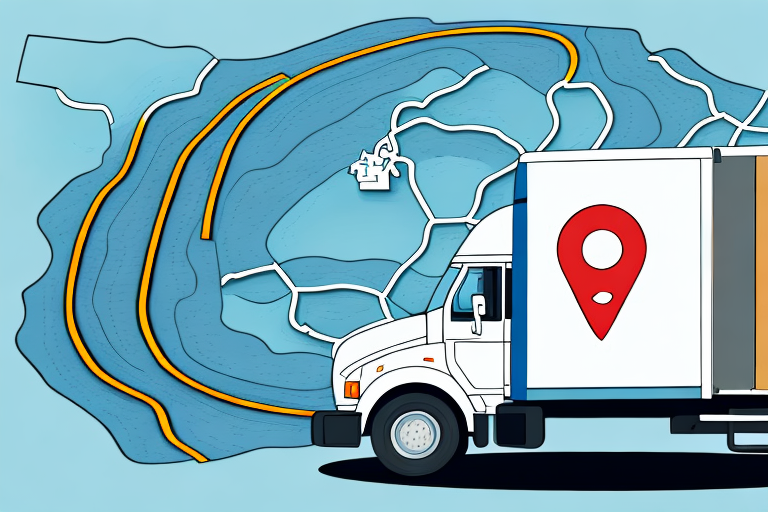Optimizing Delivery Routing for Maximum Efficiency
Efficient delivery routing is critical for any business that relies on timely and cost-effective deliveries, whether it's a small local grocery store or a large multinational corporation. By utilizing advanced technology and data analysis, companies can streamline their delivery routes, reduce fuel costs, improve customer satisfaction, and ultimately achieve maximum efficiency.
The Importance of Efficient Delivery Routing
In today's fast-paced business environment, efficient delivery routing is essential for maintaining competitiveness and profitability. Optimizing delivery routes minimizes the number of miles driven, reduces fuel consumption, and lowers operating costs. Moreover, efficient routing enhances customer satisfaction by ensuring timely and reliable deliveries, fostering customer loyalty, and enhancing the company's reputation in the marketplace.
According to a McKinsey report, companies that implement efficient routing strategies can reduce their transportation costs by up to 20%. Additionally, efficient delivery routing contributes to environmental sustainability by lowering the carbon footprint through reduced fuel consumption and fewer miles driven. Consumers are increasingly supporting companies that prioritize environmental responsibility, making efficient routing both a financial and a branding asset.
Benefits of Optimizing Delivery Routes
Optimizing delivery routes offers numerous advantages:
- Cost Savings: Reduction in fuel and vehicle maintenance costs.
- Increased Revenue: Ability to handle more deliveries within the same timeframe.
- Enhanced Customer Satisfaction: Faster and more reliable deliveries.
- Resource Management: Efficient utilization of drivers and vehicles.
- Operational Efficiency: Streamlined processes leading to higher productivity.
Studies have shown that businesses implementing route optimization can see fuel savings of up to 20% and increase delivery capacity by 15%. For more insights, refer to the Gartner Supply Chain Report.
Key Factors in Developing Effective Delivery Routes
When developing delivery routes, consider the following factors to ensure efficiency and reliability:
- Customer Locations: Group deliveries geographically to minimize backtracking and overlapping routes.
- Traffic Patterns: Analyze traffic data to avoid peak congestion times, reducing delays.
- Type of Products: Some products require specialized handling or transportation, influencing route planning.
- Delivery Time Windows: Align routes with customer preferred delivery times to enhance satisfaction.
- Seasonal Variations: Adapt routes based on weather conditions and seasonal traffic changes.
- Vehicle Capacity and Constraints: Consider the size and weight of products to select appropriate vehicles.
Technology Solutions for Optimizing Delivery Routes
Leveraging technology is key to effective delivery route optimization. Key solutions include:
- GPS Tracking: Real-time vehicle tracking allows for dynamic route adjustments based on current traffic conditions.
- Route Optimization Software: Advanced algorithms calculate the most efficient paths considering multiple variables such as traffic, delivery windows, and vehicle capacity.
- Mobile Applications: Provide drivers with live route information, customer details, and delivery instructions directly on their mobile devices.
- Telematics: Integrates GPS tracking with vehicle diagnostics to monitor performance and driver behavior, enhancing overall fleet management.
Implementing these technologies can lead to significant operational improvements. According to a Business Insider article, companies using route optimization software have reported fuel cost reductions of up to 15% and a 25% increase in delivery efficiency.
Enhancing Delivery Routes with GPS Tracking
GPS tracking is a powerful tool that helps companies optimize their delivery routes. By providing real-time location data of vehicles, companies can:
- Adjust routes to avoid traffic congestion, roadblocks, or accidents.
- Monitor driver behavior, such as speeding or harsh braking, to improve safety and reduce fuel consumption.
- Provide customers with accurate delivery times and real-time updates on their orders.
Additionally, GPS tracking enables companies to monitor vehicle conditions, ensuring maintenance schedules are adhered to and reducing the risk of unexpected breakdowns. For more information, visit ShipScience GPS Tracking Solutions.
Strategies for Reducing Fuel Costs in Delivery Routing
Reducing fuel costs is a crucial aspect of optimizing delivery routes. Here are effective strategies to achieve this:
- Route Optimization: Use GPS and route planning software to minimize miles driven.
- Vehicle Maintenance: Regular maintenance ensures vehicles operate at peak efficiency.
- Driver Training: Educate drivers on fuel-efficient driving techniques, such as smooth acceleration and reducing idling time.
- Alternative Fuels: Incorporate electric or hybrid vehicles into the fleet to lower fuel dependency.
- Fuel Monitoring: Track fuel usage patterns to identify and address inefficiencies.
Implementing these strategies can lead to substantial savings. According to the U.S. Department of Energy, fleet operators can reduce fuel costs by up to 10% through optimized routing and efficient driving practices.
Improving Customer Satisfaction through Efficient Delivery Routing
Efficient delivery routing significantly enhances customer satisfaction by ensuring that deliveries are timely and reliable. Key approaches include:
- Accurate Delivery Estimates: Provide customers with precise delivery windows based on optimized routes.
- Real-Time Tracking: Allow customers to monitor their orders in real-time, increasing transparency and trust.
- Flexibility: Offer flexible delivery options to accommodate customer preferences.
- Consistent Performance: Reliable delivery schedules foster long-term customer relationships.
Enhanced customer satisfaction leads to increased loyalty and positive word-of-mouth, which are vital for business growth. A study by Forbes highlights that companies with optimized delivery routes experience a 30% increase in repeat customers.
The Role of Data Analysis in Streamlining Delivery Routes
Data analysis plays a critical role in streamlining delivery routes by providing actionable insights into various aspects of the delivery process. Key areas include:
- Customer Behavior: Analyzing order patterns to predict peak times and adjust routes accordingly.
- Traffic Data: Utilizing historical and real-time traffic data to plan efficient routes.
- Performance Metrics: Monitoring delivery times, fuel usage, and driver performance to identify areas for improvement.
- Predictive Analytics: Forecasting future demand and adjusting resources to meet changing needs.
By leveraging data analytics, companies can make informed decisions that enhance route efficiency and reduce operational costs. For further reading, explore the Harvard Business Review on Data Analytics in Logistics.
Managing Last-Mile Deliveries Effectively
Last-mile deliveries, the final step in the delivery process, are often the most challenging due to their complexity and direct impact on customer satisfaction. Best practices for managing last-mile deliveries include:
- Route Consolidation: Combine multiple deliveries in the same area to maximize efficiency.
- Flexible Delivery Options: Offer various delivery times and methods to meet customer needs.
- Real-Time Communication: Keep customers informed about their delivery status through notifications and tracking.
- Use of Local Hubs: Establish local distribution centers to shorten delivery distances and times.
Challenges in last-mile delivery include traffic congestion, varying customer availability, and high operational costs. Investing in advanced technologies and data-driven strategies can help overcome these obstacles. For more strategies, visit ShipScience Last-Mile Solutions.
Case Studies: Success Stories in Optimizing Delivery Routing
Several companies have successfully optimized their delivery routing to achieve substantial efficiency gains:
- UPS: Implemented advanced routing software, saving over 10 million gallons of fuel annually and reducing their carbon footprint by more than 100,000 metric tons each year.
- Amazon: Invested in robotics and automated sorting systems to enhance delivery speed and accuracy.
- FedEx: Utilized telematics and data analytics to optimize fleet management and route planning.
These case studies demonstrate the tangible benefits of investing in delivery routing optimization. For detailed stories, refer to the ShipScience Case Studies.
Future Trends and Innovations in Delivery Routing Optimization
The future of delivery routing optimization is set to be transformed by several emerging trends and technologies:
- Autonomous Vehicles: Self-driving delivery trucks and drones are expected to revolutionize last-mile deliveries.
- Artificial Intelligence and Machine Learning: Enhanced predictive analytics for more accurate routing and demand forecasting.
- Robotics and Automation: Increased use of robots in warehouses and sorting facilities to streamline operations.
- Advanced Telematics: Improved vehicle monitoring systems that provide deeper insights into fleet performance.
- Electric Vehicles: Adoption of electric delivery vehicles to reduce carbon emissions and operational costs.
These innovations promise to further enhance efficiency, reduce costs, and improve sustainability in delivery operations. Staying ahead of these trends will be crucial for businesses aiming to maintain a competitive edge. For more on future trends, explore the Forbes Insights on Logistics Trends.








